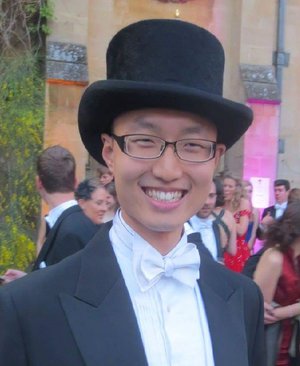St John's students publish in 'Nature'
 The paper,
entitled ‘Operation
of a homeostatic sleep switch’, addresses the brain mechanisms controlling
sleep and waking, and results from the work of Professor Gero Miesenböck and his
team at the Centre for Neural Circuits and Behaviour.
The paper,
entitled ‘Operation
of a homeostatic sleep switch’, addresses the brain mechanisms controlling
sleep and waking, and results from the work of Professor Gero Miesenböck and his
team at the Centre for Neural Circuits and Behaviour.
Freddy investigated how a group of neurons in the brains of Drosophila, fruit flies, sense how much they need to sleep. Freddy says, "My Final Honour School research project has been one of the highlights of my time at Oxford so far. The opportunity to apply some of the thinking skills and theoretical knowledge gained in the first two years of the course in a practical fashion was a really rewarding experience, which kindled my ambition to make research a major part of my future career.
I used a genetic manipulation technique known as RNA interference to investigate how a group of neurons in the Drosophila brain sense how much the fruit fly needs to sleep. After my results showed the involvement of the dopamine receptor Dop1R2, my supervisor and other members of the lab used further genetic manipulations and electrophysiological recordings to elucidate the molecular machinery by which this receptor changes the activity of the cells, thus controlling when the fly sleeps and when it wakes.
The fruit fly offers a great model to investigate how sleep is regulated, as it is possible to test how the genetic underpinnings of a neuronal circuit affect the behaviour of the animal. I thoroughly enjoyed working on this project, and being able to contribute to a publication was the icing on that cake."
 Also working on the project and contributing to the paper was Michael Song, a DPhil student at St John's. Michael says:
Also working on the project and contributing to the paper was Michael Song, a DPhil student at St John's. Michael says:
"We discovered the dopamine
receptor by which this action takes place, and further uncovered that
the above modulation occurs reciprocally by acting on two ion channels, Shaker
and Sandman, whose activities are decreased and increased respectively, causing
the fly to be awake or asleep.
I contributed to finding the ion channels responsible for this switch, and this was an integral part of my DPhil research. This paper marks a huge step for neuroscience as well as my personal career, and I feel proud and honoured to be a part of this 'stimulating' endeavour.”
Read Michael and Freddy's paper, which was published
online on 3 August, here
Read the news story on the CNCB’s website here